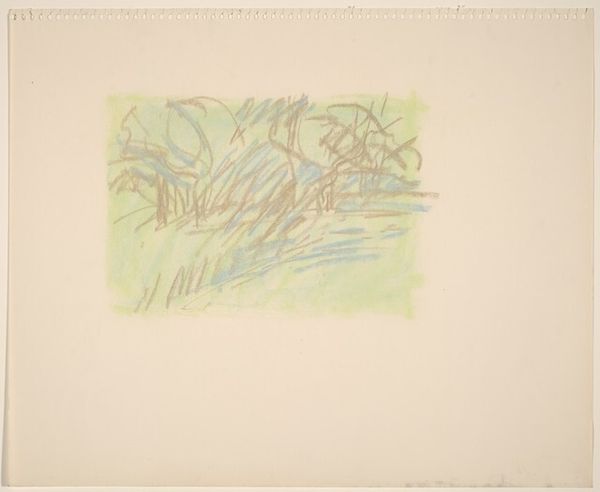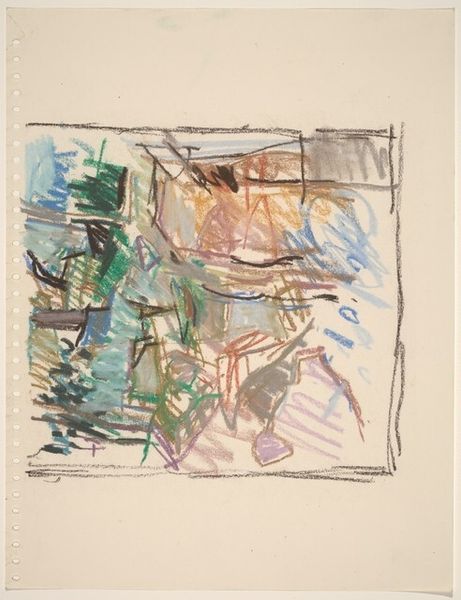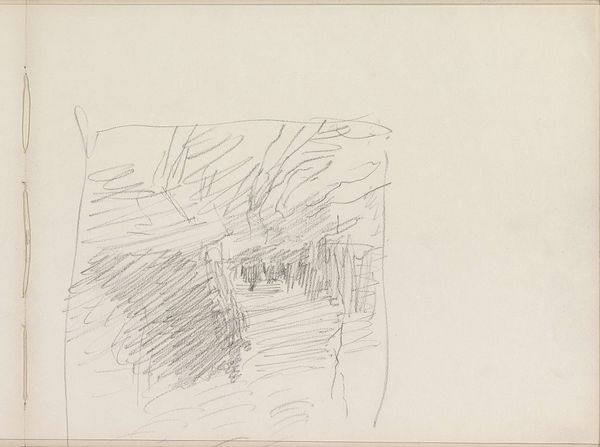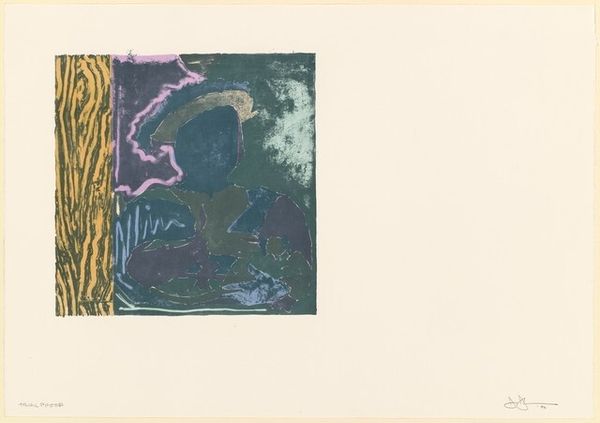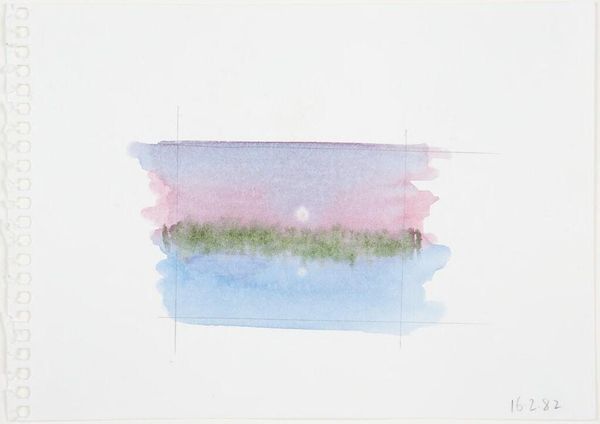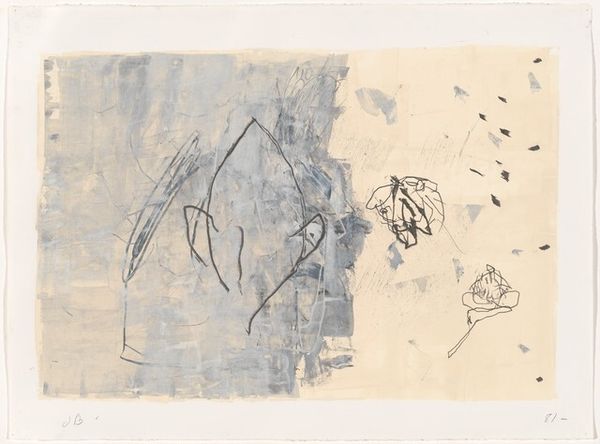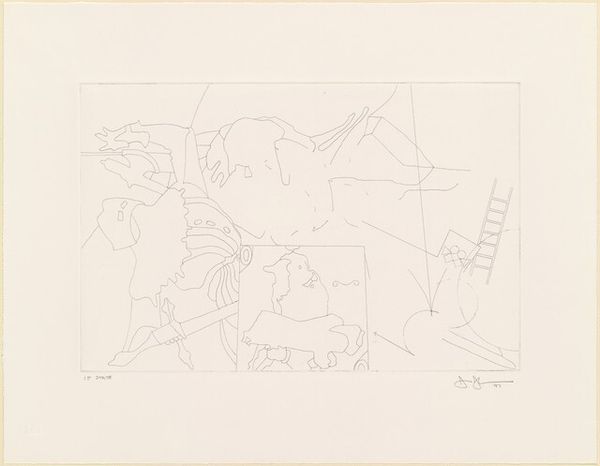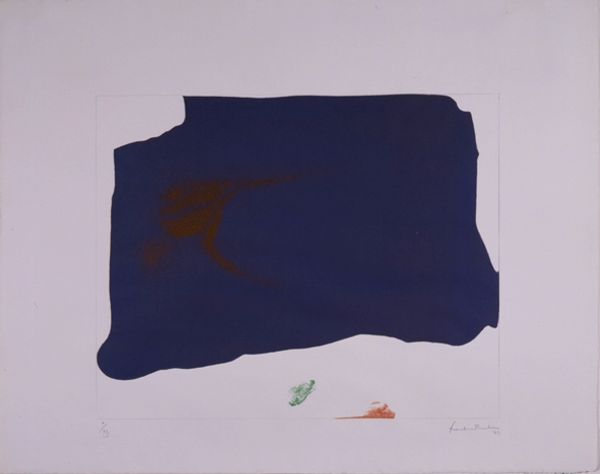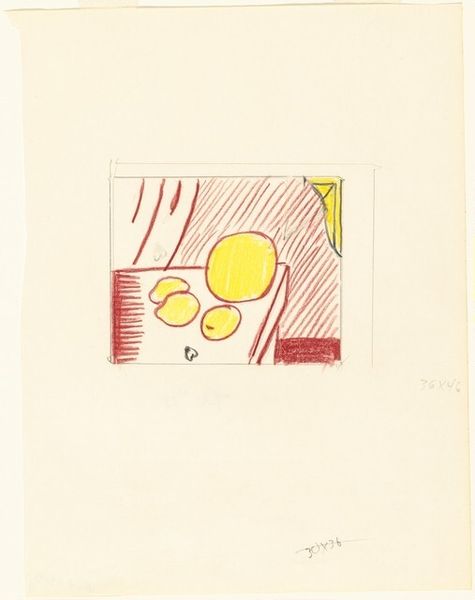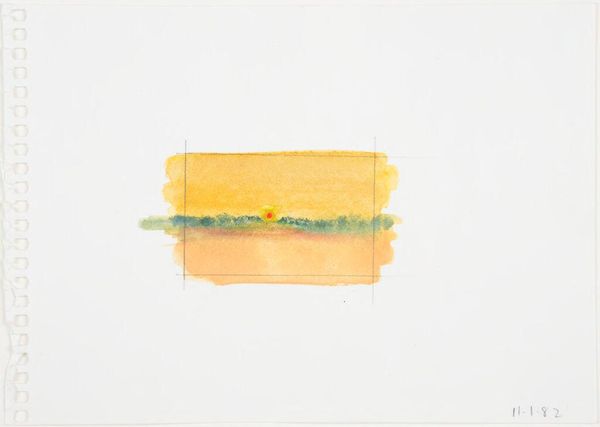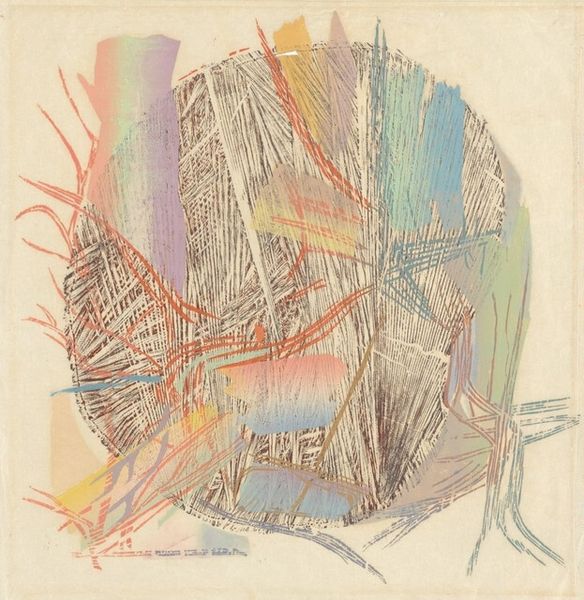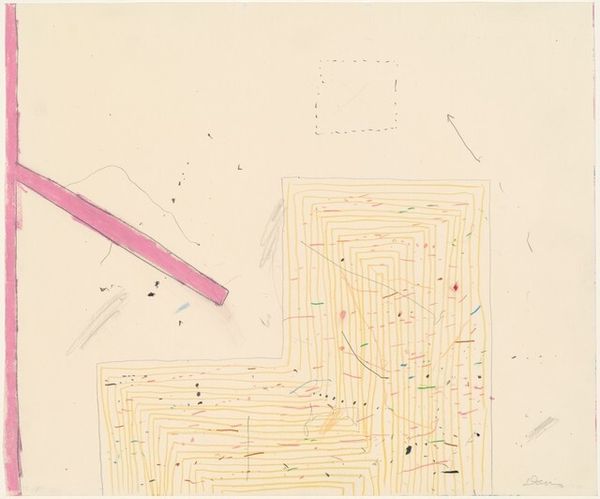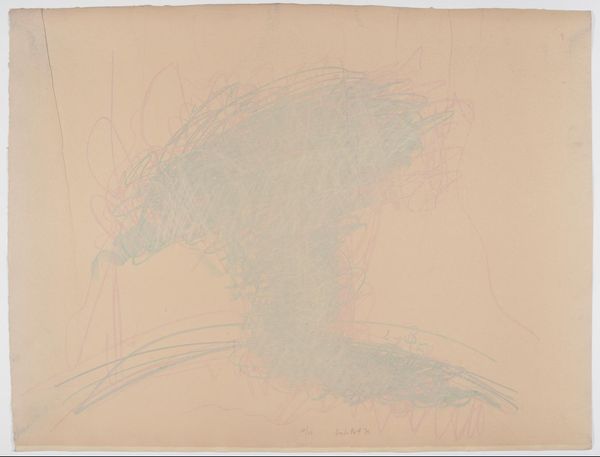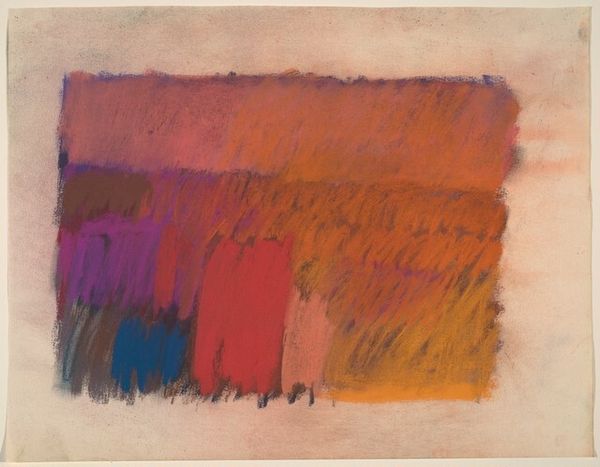
Dimensions: plate: 50.8 × 60.33 cm (20 × 23 3/4 in.) sheet: 80.33 × 90.49 cm (31 5/8 × 35 5/8 in.)
Copyright: National Gallery of Art: CC0 1.0
Editor: Here we have Nancy Graves's "Saille," a mixed-media print from 1977. It feels like a half-remembered landscape, all soft lines and faded colours. What do you see in this piece? Curator: For me, this work sits within a powerful dialogue between abstract expressionism and feminist theory. Graves, working in a predominantly male art world, is staking a claim on abstraction, on mark-making, but doing so in a way that refuses traditional masculine gestures of dominance. The ephemeral nature of the lines, the gentle colours… it’s almost a whisper, a refusal to shout. Do you see how she uses layering to create depth without solid form? Editor: I do. It's interesting how the lack of defined shapes makes it feel both chaotic and peaceful. It doesn’t try to impose a singular view. Curator: Exactly. Consider also the historical moment: 1977. Second-wave feminism is in full swing. There's a powerful critique of patriarchal structures and a search for new ways of seeing and representing the world, and the self. Could this 'landscape' be interpreted as a representation of internal space rather than external reality? A psychic landscape, perhaps? Editor: That’s fascinating. I hadn’t thought about it as a rejection of masculine artistic traditions, but now that you point it out, it seems obvious. The ambiguity of the lines creates this open, almost vulnerable feeling. Curator: And this vulnerability, this embracing of the incomplete and the provisional, can be read as a distinctly feminist artistic strategy. Graves challenges the viewer to actively participate in the construction of meaning. What does the 'Saille' evoke in you personally? Editor: Initially, I just saw a faded image, but now I see layers of intent and cultural context adding real depth. Curator: Exactly, that's the key—art is always speaking to and being spoken to by history.
Comments
No comments
Be the first to comment and join the conversation on the ultimate creative platform.
